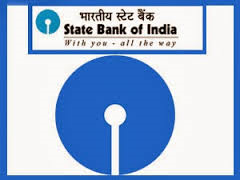
COMPUTERIZATION OF BANKS IN INDIA:
E-commerce and e-banking are the buzz words in the global commercial activities today. E-banking or Electronic banking refers to conducting banking activities with the help of information technology (IT) and computers.
Computerization of banking functions in India was resisted by labour unions for fear of loss of job opportunities. Secondly, computerization needs IT savvy personnel which require intensive technical training. Thirdly, computerization needs heavy capital outlay for the purchase of machines.To have effective computerization of banks a large num¬ber of bank branches situated in rural areas need to be connected. Telecommunication facil¬ity at rural areas is slow to reach. For the reasons mentioned above, computerization made a slow entry in Indian banks.
Based on the suggestions made by Rangarajan Committee, banks started initiating measures to computerize their various operations. Public Sector Banks (PSU banks) started identifying important /large branches for full branch computerization.
Banks which had fully computerized some of their branches started inter-connecting their computerized branches using leased telephone lines or through the satellite system. This enabled banks to have a better-centralized control over branches besides ensuring comprehensive service to their customers.
Banks started providing for sizeable funds for computerization of their operations. It was necessitated due to financial sector reforms initiated in the early 90s through Narasimham Committee recommendations.
Further globalisation and liberalisation measures introduced during the 1990s allowed setting up of new private sector banks and free entry of foreign banks into India. This brought in a different and new operating environment to banks.
The deregulation of interest rate regime, phased reduction in Cash Reserve Ratio / Statutory Liquidity Ratio, the introduction of the universal banking system, permission to start new banks in the private sector, etc., by Reserve Bank of India encouraged competition among banks.
These measures had pushed the Indian banks to go for state-of-art IT and services and products like ” anywhere banking “, ” telebanking” etc. Simultaneously the importance of effective Management Information System (MIS) for control of operations, maintenance of data base, good customer relationship was felt.
Accordingly banks presently cover performance monitoring, decision making, control of branches, administrative matters, submission of statutory returns to RBI, inter branch transactions, reconciliation of outstanding entries in various accounts, funds transfer, credit related information, investment management, treasury operations through money market, fore market, securities market, employees personal data and scores of other operations with the use of IT and computers.
Yet the level of computerization may differ from banks to banks. Today, we may say that 80 per cent of banking operations in cities are computerized. The process is fast picking up even at the rural branch level.Today, the number of computers used by banks in India had crossed 1, 00,000. The total number of ATMs is more than 2000.Thus we can say that computerisation of banks have been quite helpful for the customers and the bank too. But we need to keep on improving and implementing latest technologies for the continuous betterment of our banking sector.


